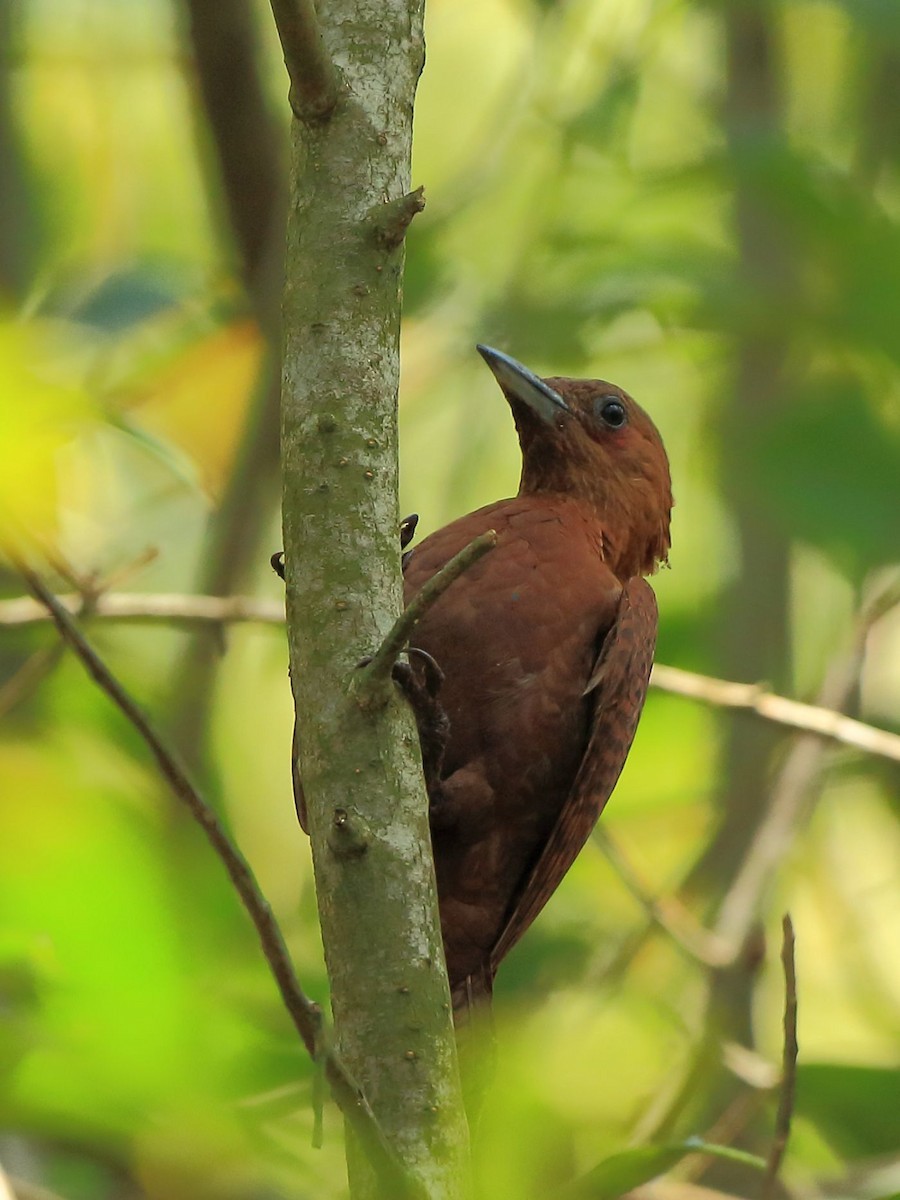Rufous Woodpecker
A species of Neotropical Crested Woodpeckers Scientific name : Micropternus brachyurus Genus : Neotropical Crested Woodpeckers
Rufous Woodpecker, A species of Neotropical Crested Woodpeckers
Botanical name: Micropternus brachyurus
Genus: Neotropical Crested Woodpeckers
Content
Description General Info
 Photo By Arnab Pal
Photo By Arnab Pal Description
The rufous woodpecker is about 25 cm long, overall dark brown with dark bands on the feathers of the wing and tail giving it a black-barred appearance. The head appears paler and underparts are of a darker shade. The bill is short and black with a slight curvature of the culmen. At the nostrils the bill is narrow. The tail is short and rufous with narrow black bars but in subspecies badiosus the tail is dark with narrow rufous bars. Feather margins are pale in squamigularis and annamensis. Feathers on the neck, ears and lore are unmarked. Males have red-tipped feathers under eyes, between eye and ear coverts and on malar region sometimes forming a patch. Females and young lack the red feather tips. A weak but erectile crest is present. Juveniles appear streaked on the throat but some subspecies also have streaked throat feathers. In the field, birds can appear soiled and smell of ant secretions (Crematogaster ants are unique in having a spatulate tip to the sting that is used merely to spray fluid forward at intruders from a raised gaster) due to their foraging or nesting activities. 
Size
25 cm
Nest Placement
Cavity
Dite type
Insectivorous
General Info
Feeding Habits
Bird food type
Behavior
Rufous woodpeckers forage in pairs on ant nests on trees, fallen logs, dung heaps, ant, and termite hills. They have been noted to feed on ants of the genera Crematogaster and Oecophylla. Apart from insects, it has been seen taking nectar from flowers of Bombax and Erythrina and taking sap from the bases of banana fronds. The most common call is a sharp nasal, three-note, keenk-keenk-keenk but they have other calls including a long wicka and a series of wick-wick notes. They also have a distinctive drumming note which starts rapidly and then slows down in tempo. Drumming occurs through the year but increases in frequency in winter in southern India and peaking around March–April in Nepal. A display of unknown function between two birds facing each other involved swaying the head with bill held high and tail splayed. The breeding season is in the pre-Monsoon dry period from February to June. The rufous woodpecker is most well known for building its nest within the nest of acrobat ants (Crematogaster). Both the male and female take part in the excavation of the nest. Their feathers, particularly when nesting are said to be covered in a dark and smelly sticky fluid on which dead ants are often found sticking. Two white, matt, thin-shelled, translucent eggs are laid. The incubation period is 12 to 14 days. Both parents feed the young at nest although a 19th-century observer reported that his Indian field assistants who called the bird "lal sutar", meaning red carpenter, believed that the adults left the young to obtain ants to feed themselves. The moult occurs mainly from September to November. Bird lice of the species Penenirmus auritus have been recorded from this species in Thailand. The species has a wide habitat range and in Malaysia they have been found to persist even in places where swamp forests have been removed and replaced by oil palm plantations. Their habitat is mainly in the plains and lower hills mostly below 3000 m. This bird is not considered threatened by the IUCN. 

 Photo By Arnab Pal
Photo By Arnab Pal